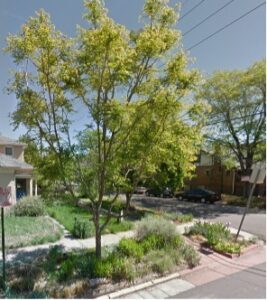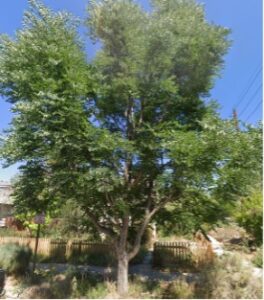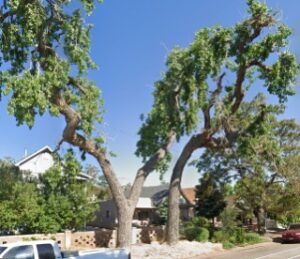In mid-June, the City of Denver confirmed the presence of the emerald ash borer (EAB)…
Let’s Talk Native Trees
The term native is increasingly being used in horticulture and tree planting practices, but what does it mean and how does it impact Denver’s urban forest? The term native refers to plants that have historically existed in an area and sometimes goes further to only include plants that existed prior to European colonization of North America. The term non-native means plants that have been introduced through human activities. Non-native plants can become naturalized through establishing and reproducing on their own in the new environment. These plants are typically not harmful to the surrounding ecosystem; however, some species can become invasive and cause environmental or economic harm through rapid spreading.


Native plants are important to local ecosystems because they are well-adapted to the soils and water availability of the area, support wildlife and pollinators and participate in symbiotic relationships and increased biodiversity. Denver is known for its semi-arid, high-plains climate and, prior to tree planting projects, was characterized by cottonwoods and willows growing near streams. Because Denver does not historically have many trees and the trees that are native are not well-suited for urban spaces, the way we plan for the urban forest today relies on non-native species.
Denver sees extreme temperature swings, periods of limited water availability and weather events such as hail and snowstorms, making it a challenging place to grow and establish trees. Through our free tree planting program, we have focused on selecting species that are hardy, add diversity to the urban environment and are resistant to local pest and disease issues. Over the years, the mindset of planting the same species in lines along streets and blocks has shifted to prevent major tree loss events such as the effects of emerald ash borer reaching Boulder in 2013.
To view Denver’s rules and regulations for tree planting within the City right-of-way, as well as the 2025 Approved Street Tree List, please visit our website at denvergov.org/forestry.
In 2024, we planted over 80 different species and cultivars of trees which will support a healthy urban forest for future years. While native trees and plants are important to maintain in our city, selecting a tree for your property or plants for your yard both rely on planting the right species in the right place. This selection process will vary based on your individual site characteristics but will continue to change with differing weather patterns and temperatures to come. Continued research and understanding of available species, as well as development of new cultivars, will help aid in decision making and creation of climate tolerant trees.
For Additional Resources, Visit the Links Below:
CSU Extension Native Trees for Colorado Landscapes
USU Extension Native Tree Discussion

